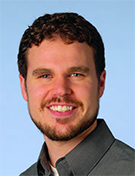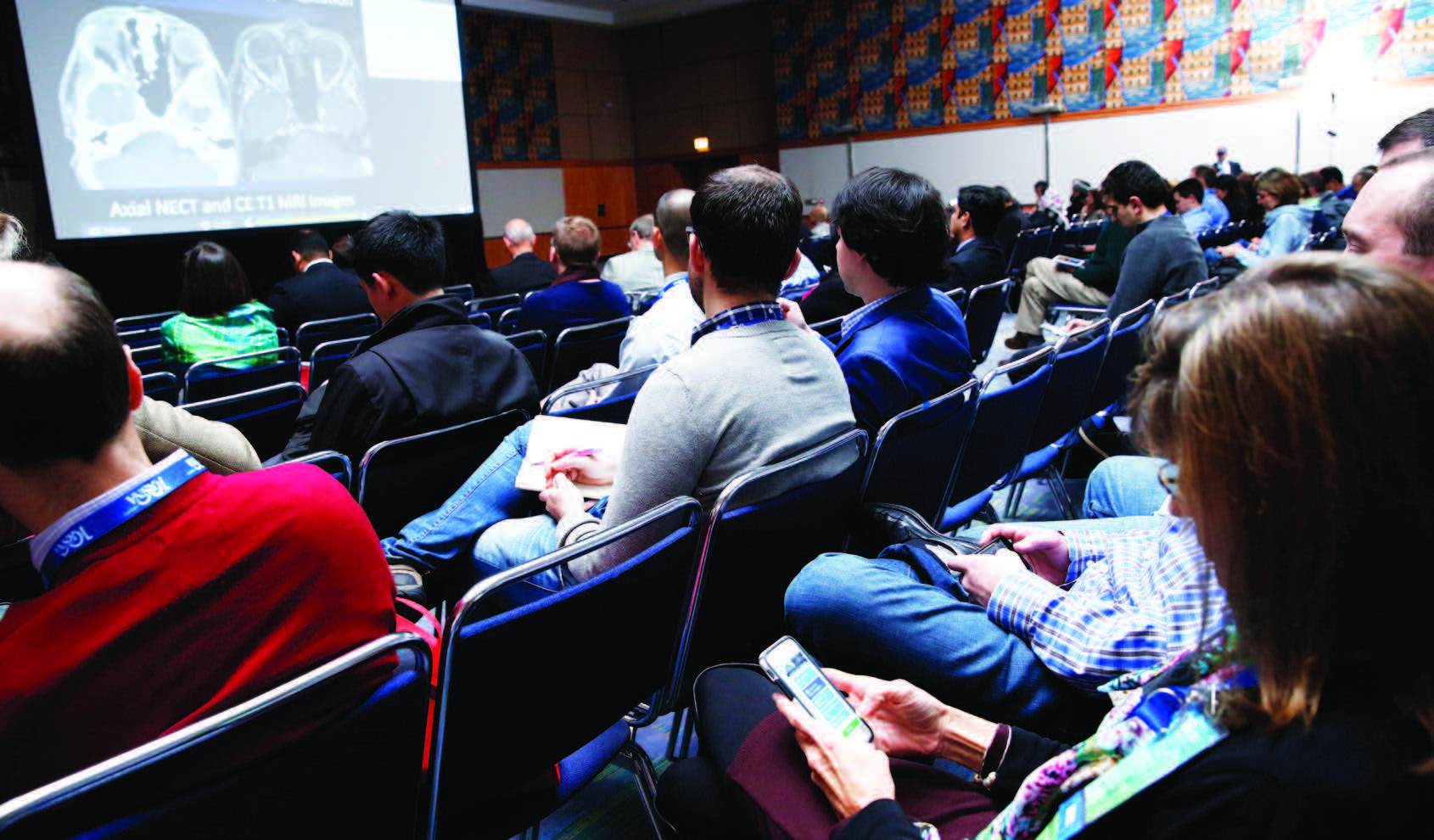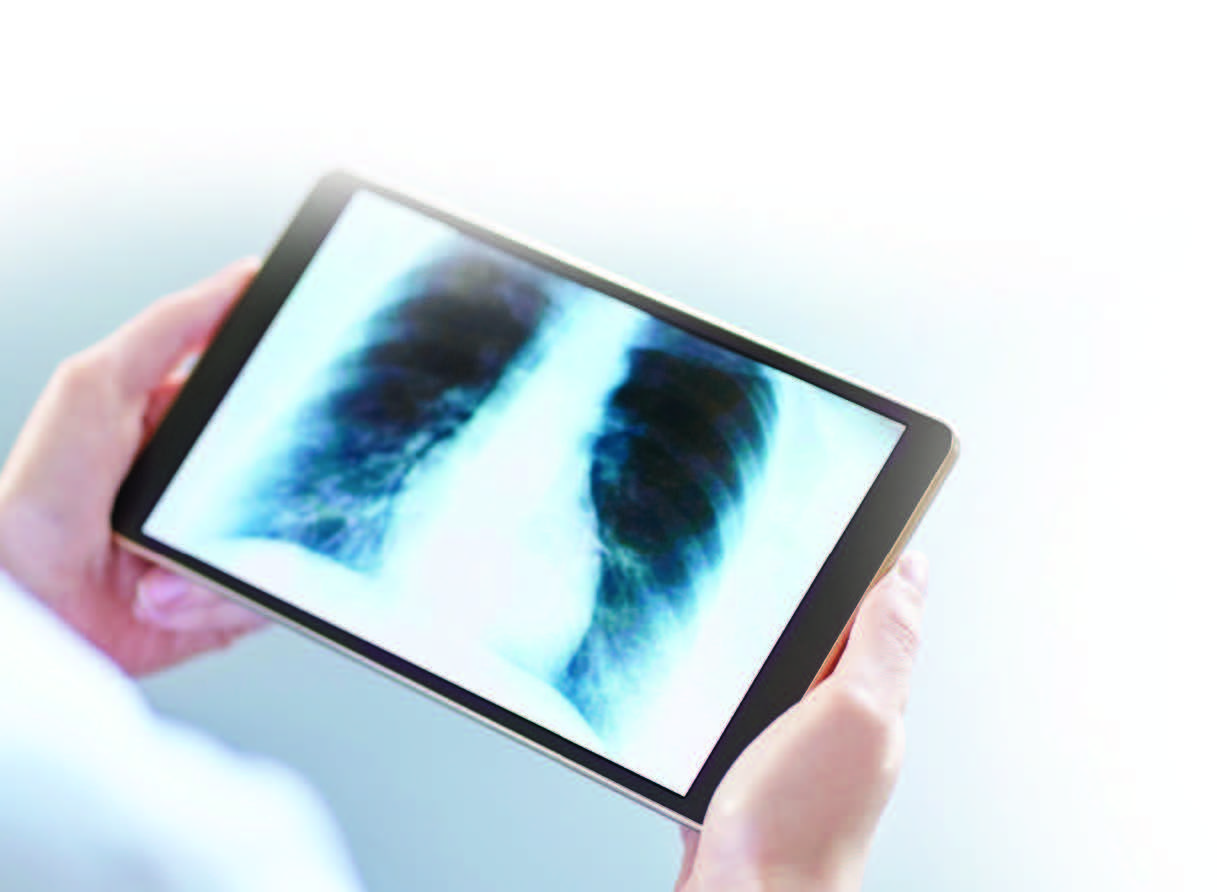Mobile Technology Takes Radiology Education to a New Level
Interactive quiz-based learning, tablet-based resources and a host of new apps are among the mobile technology taking radiology education to the next level


Initially, the tablet-based resource provided residents with access to large educational volumes otherwise difficult to transport. Although electronic books are likely the most utilized toolbox component today, innovative audience response systems such as RSNA’s Diagnosis Live™ and a host of new apps have paved the way for next-level implementation of mobile technology.
Widely recognized as the institution that pioneered a comprehensive mobility strategy for radiology resident education — the radiology department at CU pre-loaded its iPad toolbox with e-Anatomy, RadPrimer and STATdx reference sites, educational texts, exam study guides, and radiology teaching website links among other apps. The device quickly became a go-to resource for radiology residents that increased studying efficiency and accessibility to educational resources.
With help from staff at CU, Indiana University (IU), Indianapolis, followed this model by pre-loading residents' iPads with radiology resources with similar success.
“The iPad is a very effective and efficient e-reader for these materials,” said Aaron P. Kamer, MD, assistant professor of radiology at IU who helped develop the school’s iPad toolbox. “Carrying a 1.5- pound iPad that contains scores of 9.5- pound books is very appealing.”
Dr. Kamer added that using the iPad as an e-reader and as a web browser for some of the more popular radiology reference sites (STATdx, Radiopaedia, headneckbrain@spine.com, e-Anatomy) are two of the most common uses by radiology residents at IU.
One self-study app, “Anki,” allows IU residents to memorize common radiology facts. Residents create flashcards using the app, and then transfer and share the flashcards for studying, Dr. Kamer said. At CU, Kris Schramm, MD, a chief resident, created the iPhone app IRONCALL as a quick reference for residents-in-training, medical students, fellows and attending radiologists in interventional radiology (IR). The application is for on-call-related management questions across IR and is used in real time at the bedside when access to traditional texts is not feasible.
And in 2015, CU unveiled a state-of-the-art Beginning to Advanced Radiology (BAR) Lab, designed to facilitate blended learning including flipped classroom and team-based learning methods. For the flipped learning component, instructors use an Apple TV and whiteboard application to facilitate workshops. “Students complete an online MedU Core module before coming to class then are asked to apply knowledge gained from the modules in class room by annotating the iPad to identifying normal structures as well as pathology,” said Nicole Restauri, MD, assistant professor of radiology and Bar Lab director at CU.
The lab is equipped with a virtual simulation teaching PACS identical to the clinical application currently used throughout the University of Colorado Health System and utilizes iPads to deliver curriculum.
Quiz-based Learning is the Next Big Thing
Interactive, quiz-based applications are making a significant impact on the lecture experience for radiology residents by allowing educators to move beyond the didactic approach to a more Socratic method of teaching.
RSNA took mobile education to a new level by introducing its online audience response system, Diagnosis Live, in 2011. In the interactive program, the lecturer uploads a PowerPoint presentation and uses the online authoring feature to create embedded questions that are answered by participants using tablets or smartphones.
Initially tested at only a few locations, Diagnosis Live is now being used at 50 institutions and is a popular draw at RSNA annual meetings. Sandeep Deshmukh, MD, an associate professor of radiology at Thomas Jefferson University, Philadelphia, who participated in Diagnosis Live beta testing, has received excellent feedback about the system’s efficacy in the classroom.
“While residents and faculty acknowledge that some didactic content is still needed, residents prefer the quiz-based format of Diagnosis Live,” Dr. Deshmukh said. “Personally, I have gone to an almost entirely Diagnosis Live format with classroom flipping to deliver didactic content.”
Mobile devices allow for increased accessibility to other electronic resources. For example, the popular Diagnosis Please feature in RSNA's Radiology journal offers mobile users the chance to diagnose radiology cases submitted by readers.
Tablets will become further integrated into radiology education as time and research prove their value, said Marc Kohli, MD, director of clinical informatics and associate professor of clinical radiology in abdominal imaging at University of California San Francisco, who was a radiologist at IU when the iPad toolbox was developed.
“As far as resident education and radiologist continuing education goes, I see a shift away from traditional didactic in-person lectures toward online video and quiz questions becoming more important,” Dr. Kohli said. “Tablets are well positioned to be a convenient avenue for consumption of this content as it’s created.”
Mobile Education Enters Next Phase
Despite the enormous progress in a short time, barriers — including time and funding constraints — continue to prohibit a more rapid and complete adoption of mobile technology in radiology education.
“The next phase is creating an overall vision of how to use mobility to change the learning environment,” said Harprit Bedi, MD, vice-chair of radiology and associate radiology professor at Tufts University School of Medicine, Boston, which began offering its residents tablets in 2011. “Then we need the resources to develop a plan that can have an impact.”
Dr. Bedi stressed that the specialty needs more apps and tools created by radiologists for radiologists. “Most resources out there are made for K-12 learning environments and we are trying to best apply those resources to our field,” he said.
Still, shortages in time and money have not resulted in a lack of ideas. Thinking ahead, Dr. Kamer said, “I would love to explore using some of our department’s informatics resources to develop future educational or education administration apps to streamline processes like conference evaluations and attendance tracking and to regularly distribute interesting cases or daily testing questions.”
In terms of Diagnosis Live and other audience response applications, Dr. Deshmukh believes the biggest limitation may be getting lecturers to change their format.
“Many non-digital-native teachers are not open to change, but once the initial hump is overcome, it gets easier,” he said. “We have entered the next frontier of digital medical education.”
Security Solutions for Mobile Technology
While mobile technology adds value to residency programs, institutions distributing mobile devices must use care in the way they access and handle patient data.
Indiana University employs a university-administered mobile device management (MDM) solution to safeguard confidential information, said Aaron P. Kamer, MD, assistant professor of radiology. Built-in protections offered by MDM solutions allow educators to focus on user and content management rather than software updates.
Dr. Kamer initially thought that device management software would be needed to maintain a HIPAA-compliant device. “Although we do use the MDM software to enforce having an encrypted, passcode-protected device, most modern medical apps (including our mobile PACS app) do not store patient data on the device itself. This provides an added layer of security that makes strict device management less of a concern,” Dr. Kamer said.
MDM solutions operate via a central server which communicates with the mobile devices. The server protects data on the tablets while delivering secure software updates and allows the university to provide links to frequently used sites and automatically set up the user’s university email.
The extra security is critical to HIPAA compliance. Top-level MDM solutions isolate, or “containerize” confidential data from any non-compliant data, meaning that residents carrying hybrid work/personal devices are protected from crossover or leaks occurring between work and personal data stored on the device.

